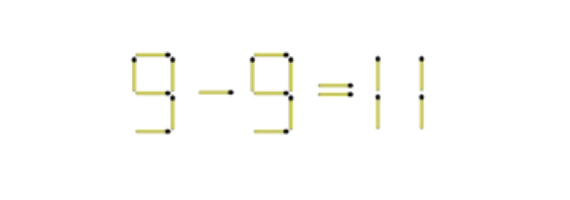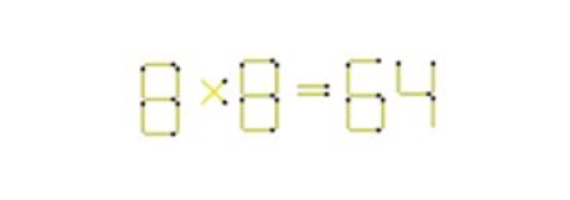It is now common for textbooks and notebooks to cohabit with tablets and e-books in the backpacks of schoolchildren. The use of digital devices as an educational tool is increasingly promoted, and from an earlier age, something similar to what happens to adults in their professional tasks. However, some researchers are warning about the risks of this new way to study and work.
For example, a recent study demonstrates the importance of thinking with one’s hands. Its findings indicate that the manipulation of the objects involved in the problem facilitates its solving, like when we shuffle Scrabble tiles to help us see and form new words.
To test the conclusions of this study, we propose a series of arithmetic problems with matches. You can try to solve them mentally or by manipulating the matches:
-
- Add three matches to make the equation true:

-
-
Move three matches to make the equation true:
-

-
-
What is the smallest number you can get by moving only two matches?
-

Returning to the cited study, researchers from the University of Kingston (UK) found that when challenging two groups of volunteers to a logic problem (distribute 17 animals in four pens so that each pen has an odd number of animals), those who could create and manipulate models obtained better results than those who only had a tablet.
More striking is that in the same study it was also found that this manipulation not only facilitates the solving of problems of a spatial nature, but also of others requiring abstract calculation. Therefore, when faced with a statistical problem, the percentage of success in finding a solution jumped from 40% to 75% when, instead of limiting the volunteers to the use of pencil and paper, they were given the information in card format. On the 150th anniversary of the Periodic Table, it is worth remembering that it was like this, playing with cards representing the chemical elements, that Mendeleyev orchestrated his great invention.
Faced with the growing introduction of digital media in the classroom, a resistance movement has emerged among teachers who promote more creative and manual methods to teach thinking. In particular, they call for their use in teaching mathematics, whether using origami, chess or a stocking. This last practise is the one that has had the greatest impact in recent times: Sara Jensen is a professor of mathematics at Carthage College (Wisconsin, USA), where she teaches the course “The mathematics of knitting” in which she explains mathematical concepts and teaches how to solve problems by getting her students to knit.
Solutions



Comments on this publication